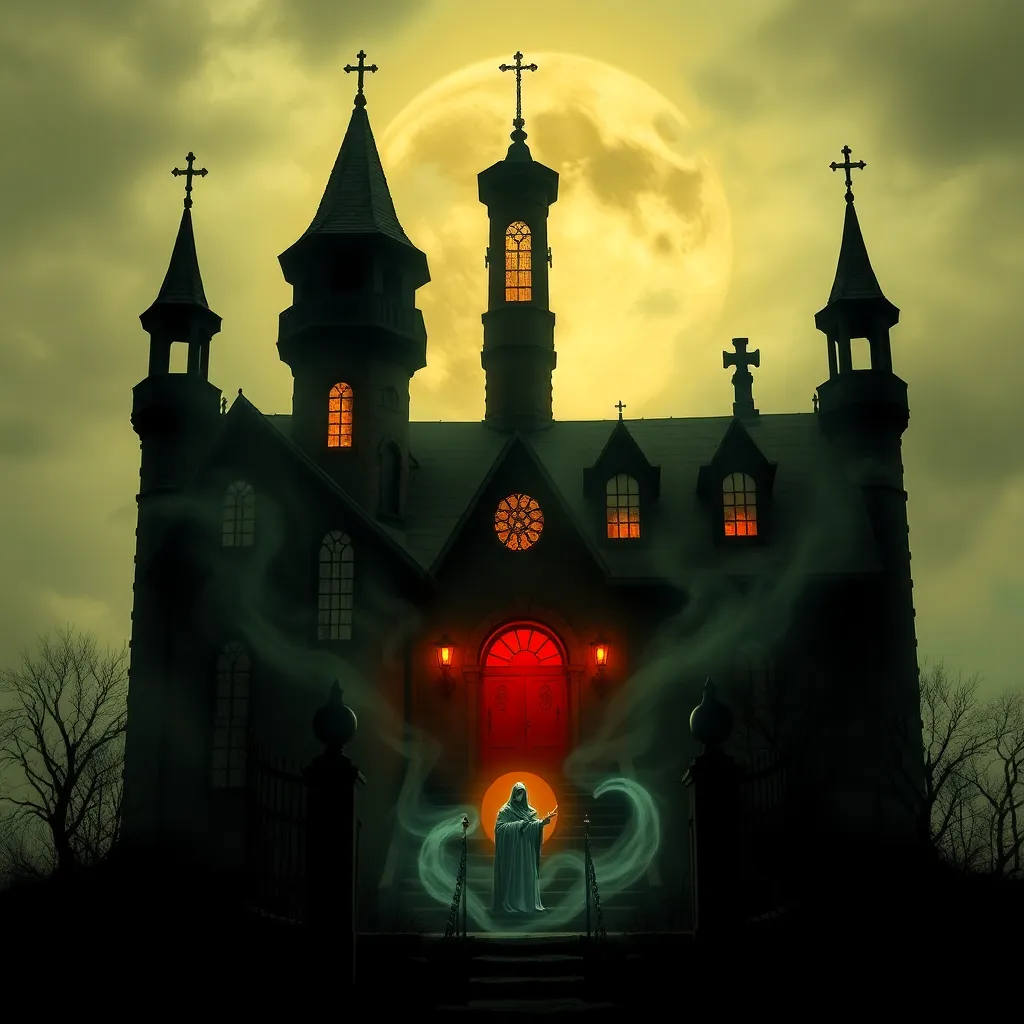The Ghosts of Salem: Exploring the History of Witchcraft and Ghostlore
I. Introduction
Salem, Massachusetts, stands as a significant landmark in the annals of American history, primarily due to its notorious association with witchcraft and the infamous witch trials of the late 17th century. The events that unfolded during the Salem Witch Trials have not only shaped the town’s identity but have also become emblematic of mass hysteria and the consequences of superstition.
In addition to its witchcraft history, Salem is steeped in rich ghostlore, with numerous tales of hauntings and spectral encounters. The intersection of witchcraft and ghostlore creates a fascinating tapestry that draws tourists and historians alike, adding layers of intrigue to this historic town.
This article aims to explore Salem’s historical background, the witch trials, the cultural beliefs surrounding witchcraft, the ghostlore that has emerged, and the lasting legacy of these events on modern society.
II. Historical Background of Salem
A. The founding of Salem and its early years
Founded in 1626, Salem began as a Puritan settlement. The early years were marked by a strict religious framework that guided the lives of its residents. The community was deeply intertwined with the church, and the Puritan belief system instilled a sense of moral absolutism among its members.
B. The socio-political climate leading up to the witch trials
By the late 17th century, Salem was a microcosm of broader societal tensions. The town faced political instability, economic uncertainty, and social strife. The aftermath of King Philip’s War (1675-1676) had left the community on edge, leading to heightened fears of the devil and witchcraft. These fears were compounded by internal conflicts within the town, including disputes between families and differing religious factions.
C. Key figures in Salem’s witchcraft history
Several prominent figures played significant roles in the events surrounding the witch trials. Notable individuals included:
- Reverend Samuel Parris – The minister of Salem Village, whose daughter and niece were among the first to exhibit strange behaviors, sparking the witch hunt.
- Abigail Williams – Parris’s niece, whose accusations of witchcraft against several townspeople set off a chain reaction of hysteria.
- Judge Samuel Sewall – One of the judges presiding over the trials, who later publicly confessed his regret for his role in the proceedings.
III. The Salem Witch Trials: A Timeline
A. Key events leading to the trials (1692)
The Salem Witch Trials unfolded in a series of escalating events:
- January 1692: Several young girls in Salem Village, including Betty Parris and Abigail Williams, began exhibiting strange behaviors, which were attributed to witchcraft.
- February 1692: The first three women accused of witchcraft—Tituba, Sarah Good, and Rebecca Nurse—were arrested.
- March 1692: The trials began in earnest, with increased accusations leading to a frenzied hunt for supposed witches.
B. Major trials and accusations
Throughout 1692, numerous trials were held, with many individuals accused of witchcraft based on dubious evidence, including spectral evidence, which allowed witnesses to testify about visions and dreams. Trials such as those of:
- Rebecca Nurse – Acquitted but later retried and executed.
- George Burroughs – A former minister who was hanged despite a powerful speech in his defense.
- Giles Corey – Pressed to death for refusing to enter a plea.
C. Outcomes and consequences for the accused
The trials resulted in the execution of 20 individuals, with 14 women and 6 men hanged, and one man pressed to death. Many others were imprisoned, and the community was left deeply divided and traumatized by the events.
IV. Witchcraft Beliefs and Practices
A. Overview of Puritan beliefs about witchcraft
The Puritans believed that witchcraft was a grave sin and a direct affront to God. They viewed witches as individuals who had made pacts with the devil in exchange for supernatural powers. This belief was rooted in their strict interpretation of the Bible and their fear of the unknown.
B. Common accusations and the role of spectral evidence
Accusations often stemmed from personal grievances, social tensions, and economic rivalries. Spectral evidence, which allowed accusers to claim that the spirit of the accused had harmed them, became a pivotal and controversial aspect of the trials. It led to many wrongful convictions, as it was nearly impossible to defend against an invisible foe.
C. The cultural impact of these beliefs on society
The witchcraft beliefs prevalent in Salem extended beyond the trials, influencing social dynamics, governance, and community relationships. The trials instilled fear and suspicion, leading to a culture of distrust that would linger for generations.
V. Ghostlore in Salem: Legends and Folklore
A. Origins of ghost stories in Salem
The haunting legacy of the witch trials has given rise to numerous ghost stories and legends in Salem. These tales often reflect the community’s collective trauma and serve as a means of grappling with the past.
B. Notable hauntings and ghostly encounters
Some of the most notable hauntings include:
- The Salem Witch Trials Memorial – Visitors have reported feeling an overwhelming sense of sorrow and unease.
- The Hawthorne Hotel – Said to be haunted by the ghost of a sea captain, it has become a popular spot for ghost tours.
- The Old Burying Point Cemetery – The final resting place of some accused witches, where many claim to have seen apparitions.
C. The role of ghostlore in preserving Salem’s history
Ghostlore serves as a vital tool for remembering and interpreting Salem’s complex history. These stories not only entertain but also educate visitors about the town’s past, ensuring that the lessons of the witch trials are not forgotten.
VI. Modern Interpretations of Salem’s History
A. The impact of literature and media on public perception
Salem’s witch trials have been immortalized in literature and media, most notably in Arthur Miller’s play “The Crucible,” which draws parallels between the trials and the Red Scare. Such works have shaped contemporary understandings of the events and their implications.
B. Contemporary witchcraft and its resurgence
In recent years, there has been a resurgence of interest in witchcraft and pagan practices. Many individuals identify as modern witches, reclaiming the term and its associated practices as a form of empowerment.
C. Ghost tours and historical reenactments in Salem today
Today, Salem embraces its history through ghost tours, historical reenactments, and festivals, drawing thousands of visitors each year. These activities provide a platform for education while also celebrating the town’s unique identity.
VII. The Legacy of Salem: Lessons Learned
A. Reflection on the consequences of mass hysteria
The Salem Witch Trials serve as a cautionary tale about the dangers of mass hysteria and the peril of allowing fear to dictate actions. The consequences were devastating, resulting in loss of life and community trust.
B. The importance of critical thinking and skepticism
Salem’s history underscores the need for critical thinking, particularly in times of social unrest. A skeptical approach to accusations and evidence can help prevent similar tragedies from occurring in the future.
C. How Salem’s history informs current discussions on justice and morality
The events of 1692 continue to inform contemporary discussions about justice, human rights, and moral responsibility. They remind us of the importance of due process and protecting the rights of the accused.
VIII. Conclusion
In summary, the history of Salem and its witchcraft trials is a multifaceted narrative that intertwines ghostlore, societal beliefs, and the consequences of collective panic. The ongoing fascination with Salem’s ghosts and witchcraft reflects a deep-seated interest in understanding our past and the lessons it imparts.
As we remember the history of Salem, it




